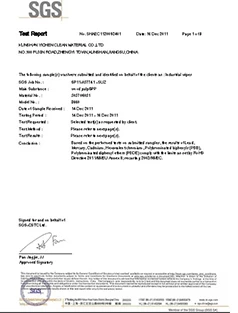Fibers, Textiles And Nonwovens In Filtration
2017-09-29 16:28:02

Technical textiles play a major and profitable role in filtration media. A wide variety of fibers, dref yarns, nonwoven fabrics, multifilament and monofilament woven fabrics, and in some cases blends or combinations of more than one of the above, are used in filtration applications. Within this article, dollar amounts are for North America specific to fiber, textile and nonwoven filtration media within the overall the market of nearly $2 billion. Filtration media fulfills a large number of specific uses as well as an overwhelming number of smaller niches that when combined, provides for overall growth at a rate higher than many developed counties gross domestic product (GDP) growth rate.
Growth is driven by many factors, often led by legislative actions and laws from global, national, state, regional and local governments and agencies for a cleaner environment. Bottom line, legislation has been filtration’s best friend. No less important, filtration is used widely to ensure product quality of many manufactured products from chemicals to pharmaceuticals and many other manufactured goods.
Growth is driven by many factors, often led by legislative actions and laws from global, national, state, regional and local governments and agencies for a cleaner environment. Bottom line, legislation has been filtration’s best friend. No less important, filtration is used widely to ensure product quality of many manufactured products from chemicals to pharmaceuticals and many other manufactured goods.
In the latter two formats, fibers are formed in-situ directly from a polymer melt creating nonwoven fabrics without the use of preexisting fibers. Airlaid nonwovens are formed from short fibers and/or wood pulp. Although not a true nonwoven, Dref spun “yarns” are a specialty media type that bypasses the roll goods format. The bulky Dref yarns are directly wrapped around a center core of a cartridge tube to form what is known as string wound cartridges. “We have produced yarns for string wound cartridges for over 25 years, an important fiber medium for a large number of users,” said Gilbert Patrick, president, Kings Mountain, N.C.-based Patrick Yarns, a large dref yarn supplier.
The most-used nonwovens in terms of sales revenue are needlefelt fabrics typically formed made using polyester, but sometimes polypropylene and other polymeric fibers including meta-aramids and PPS. Heavy nonwoven fabrics in the 14 to 22 ounce per square yard (oz/yd2) range are used in baghouse filters to capture particulate emitted within coal-fired power plants and multiple contaminates in industrial facilities before escaping into the atmosphere or a work environment. Liquid fabric bags made from needlefelts often are in the 8 oz/yd2 range, and remove particulate from liquid streams and many times serve as prefilters in a wide variety of industries including chemical processing and metal working processes.











